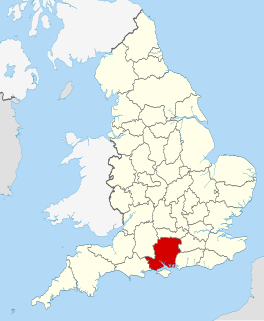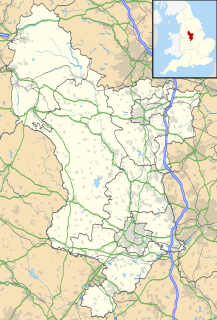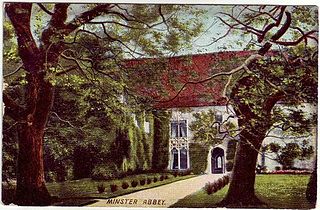This article needs additional citations for verification .(September 2016) (Learn how and when to remove this template message) |
Æthelgifu (Old English pronunciation: [æðeljivu] ), was a daughter of King Alfred the Great, an Anglo-Saxon king of the 9th century. She was the third of Alfred and his wife Ealhswith's five children and the second eldest daughter. She was likely born sometime in the 870s. [1]

Alfred the Great was King of Wessex from 871 to c. 886 and King of the Anglo-Saxons from c. 886 to 899. He was the youngest son of King Æthelwulf of Wessex. His father died when he was young and three of Alfred's brothers reigned in turn. Alfred took the throne after the death of his brother Æthelred and spent several years dealing with Viking invasions. He won a decisive victory in the Battle of Edington in 878 and made an agreement with the Vikings, creating what was known as Danelaw in the North of England. Alfred also oversaw the conversion of Viking leader Guthrum to Christianity. He successfully defended his kingdom against the Viking attempt at conquest, and he became the dominant ruler in England. He was also the first King of the West Saxons to style himself King of the Anglo-Saxons. Details of his life are described in a work by 9th-century Welsh scholar and bishop Asser.

Ealhswith or Ealswitha was the wife of King Alfred the Great. Her father was a Mercian nobleman, Æthelred Mucel, Ealdorman of the Gaini, which is thought to be an old Mercian tribal group. Her mother was Eadburh, a member of the Mercian royal family, and according to the historian Cyril Hart she was a descendant of King Coenwulf of Mercia. She is commemorated as a saint in the Christian East and the West on 20 July.
A Welsh monk named Asser who wrote a biography of Alfred the Great, described her as 'devoted to God through her holy virginity, subject and consecrated to the rule of monastic life, entered the service of God'. She was said to have become a nun as a result of her bad health. [1]
Asser was a Welsh monk from St David's, Dyfed, who became Bishop of Sherborne in the 890s. About 885 he was asked by Alfred the Great to leave St David's and join the circle of learned men whom Alfred was recruiting for his court. After spending a year at Caerwent because of illness, Asser accepted.
Alfred founded Shaftesbury Abbey ca. 890 and placed Æthelgifu as its first abbess. This Abbey along with Athelney monastery (for monks) received 1/8 of Alfred's annual revenue in support. It appears to have housed nuns from an upper-class background. Very little is known about Æthelgifu's time as abbess. [1]

Shaftesbury Abbey was an abbey that housed nuns in Shaftesbury, Dorset. It was founded in about 888, and dissolved in 1539 during the English Reformation by the order of Thomas Cromwell, minister to King Henry VIII. At the time it was the second-wealthiest nunnery in England, behind only Sion Abbey.

Athelney Abbey, established in the county of Somerset, England, was founded by King Alfred in 888, as a religious house for monks of the Order of St. Benedict. It was dedicated to our Blessed Saviour, St. Peter, St. Paul, and St. Egelwine.
In Alfred's will, there is mention of two estates left 'to his middle daughter Æthelgifu' at Kingsclere and at Candover in Hampshire, and the will itself makes no mention of her role as abbess. It is possible that the will was written before Æthelgifu became abbess, or it is possible that these estates were given to her while she was abbess, but they reverted to the male line once she died. [1]

Kingsclere is a large village and civil parish in Hampshire, England.

Hampshire is a county on the southern coast of England. The county town, with city status, is Winchester, a frequent seat of the Royal Court before any fixed capital, in late Anglo-Saxon England. After the metropolitan counties and Greater London, Hampshire is the most populous ceremonial county in the United Kingdom. Its two largest settlements, Southampton and Portsmouth, are administered separately as unitary authorities and the rest of the area forms the administrative county, which is governed by Hampshire County Council.









